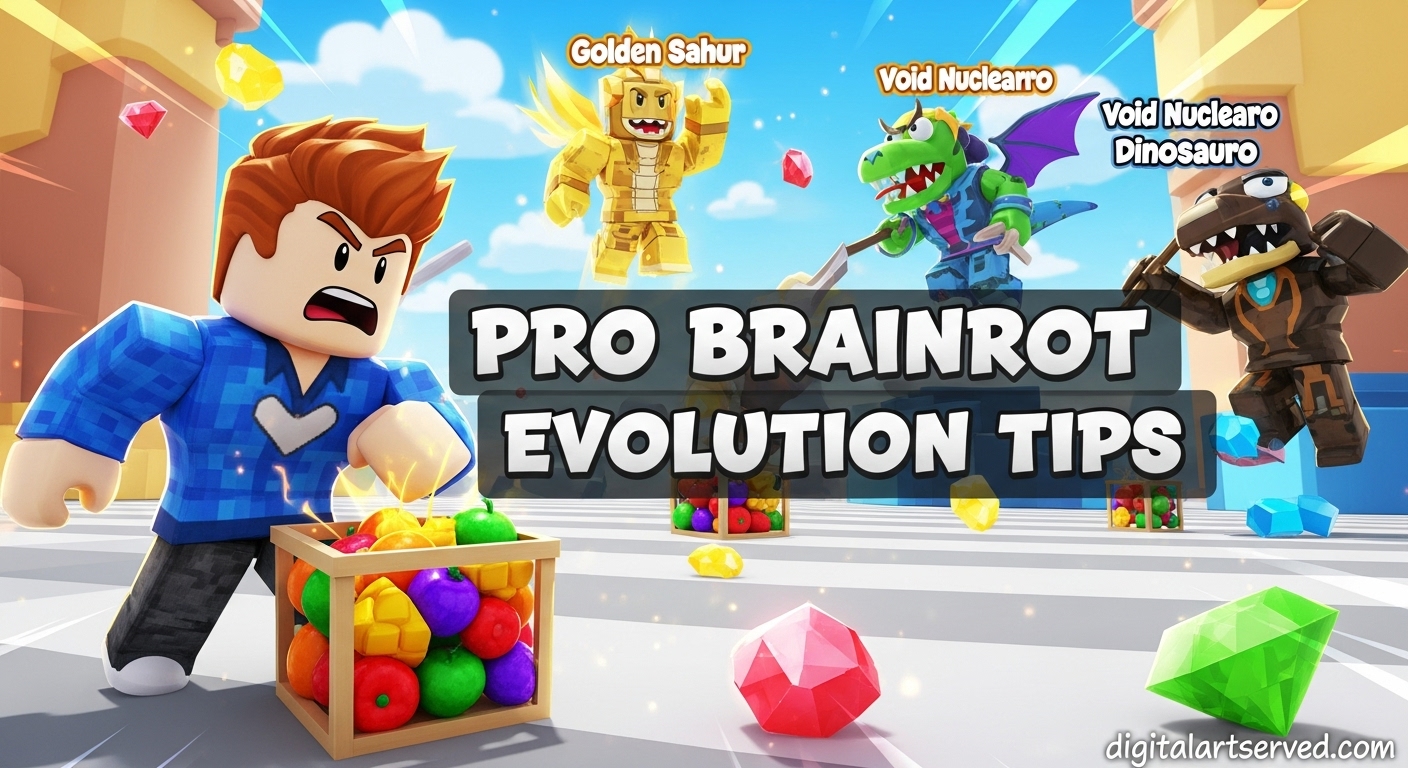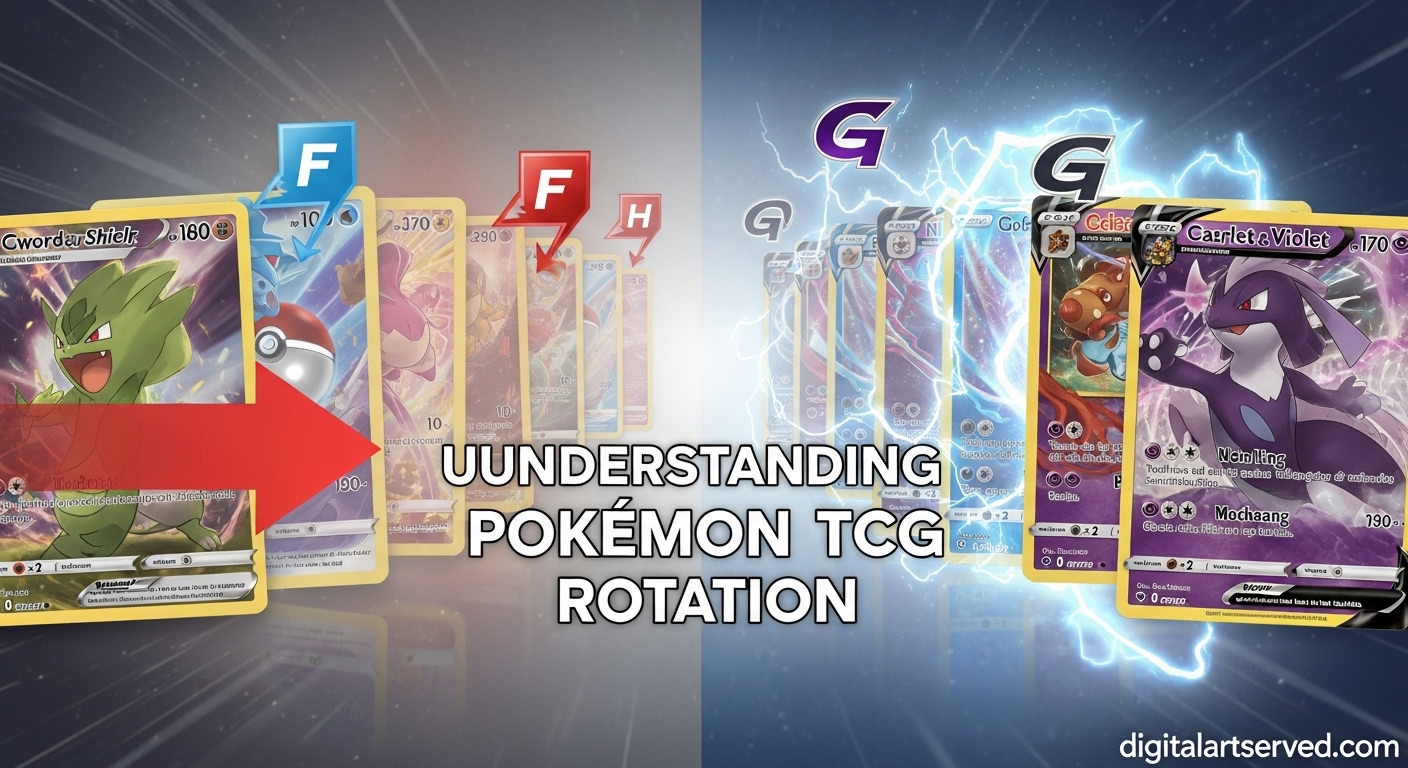

You’ve spent months building the perfect Pokemon TCG deck, only to hear that your favorite cards might soon be “rotated out” of tournament play. What does this mean for your collection and your chances of winning? Pokemon TCG rotation is a yearly process that removes older cards from the Standard format to keep the game fresh and balanced. Don’t worry – understanding rotation is easier than you might think, and this guide will walk you through everything you need to know to stay competitive and protect your investment in the game.
Pokemon TCG rotation is when the game removes older sets of cards from the Standard format, which is the main format used in official tournaments. Think of it like sports teams updating their rosters each season – they keep the core game the same but bring in new players (cards) to keep things exciting and fair.
Rotation happens because the Pokemon TCG releases new sets throughout the year. Without rotation, the game would have too many cards, making it hard for new players to catch up and potentially creating overpowered combinations that break the game’s balance. The Pokemon TCG rotation system ensures that the game stays fresh, competitive, and accessible to everyone.
The rotation process is managed by Play! Pokemon, the official organization that runs tournaments and sets the rules for competitive play. They decide which cards rotate out based on age and how well they work with newer sets. This isn’t about banning “broken” cards – it’s about natural evolution of the game.
The Pokemon TCG rotation schedule follows a predictable pattern that happens once every year. For most of recent history, rotation has occurred in April, shortly after the Pokemon World Championships. This gives players time to adjust their decks and prepare for the new competitive season.
In 2025, the rotation will happen on April 11 for in-person Play! Pokemon events. However, if you play Pokemon TCG Live (the digital version), you’ll experience the rotation earlier – on March 27, 2025. This digital preview gives players a chance to test out the new Standard format before attending physical tournaments.
The rotation schedule is important to track because it affects when you can use certain cards. For example, if you’re planning to compete in a Regional Championship in May 2025, you need to make sure your deck doesn’t include any cards that rotated out in April. Many players start adjusting their decks months in advance to prepare for these changes.
Pro Tip: Mark your calendar for rotation dates and check the official Pokemon website announcements each year. This helps you avoid showing up to a tournament with an illegal deck!
Regulation marks are the key to understanding Pokemon TCG rotation. These are small letters printed on the bottom of every Pokemon card, usually in the lower left corner. The letters tell you which “block” a card belongs to and when it will rotate out of Standard format.
Currently, the regulation marks you’ll see on cards are:
When rotation happens, the oldest mark gets removed. In 2025, all cards with the F mark will rotate out, leaving only cards with G, H, and future marks legal for Standard format play. This system makes it easy to check your cards – just look at the letter on the bottom, and you’ll know if it’s legal for tournament play.
Real Example: If you have a Radiant Greninja with an F mark, it won’t be legal in Standard format after April 2025. But if you have a newer card with a G or H mark, it will still be perfectly fine to use in tournaments.
When cards rotate out of Standard format, they’re not banned forever – they just move to different formats where they can still be played. This is an important distinction that many new players misunderstand. Your rotated cards still have value and can be used in several ways.
The Expanded format allows more cards than Standard, including many that have rotated out. This format is still officially supported by Play! Pokemon, though it has fewer tournaments than Standard. If you love your older cards, Expanded format gives you a place to keep using them competitively.
There’s also the Unlimited format, which allows almost every card ever printed (except those specifically banned). While Unlimited isn’t used in official tournaments, it’s popular for casual play and gives your entire collection a home.
For Trainer cards and Basic Energy cards, there are special rules. If a newer version of the same card is legal in Standard format, you can use older versions too. For example, if Rare Candy from a recent set is legal, you can use your old Rare Candy cards from years ago in Standard format tournaments.
Data Point: According to Pokemon.com, over 1,000 individual cards rotate out of Standard format each year, but most find new life in Expanded and Unlimited formats.
The Pokemon TCG has several different formats, each with its own rules about which cards are legal. Understanding these formats helps you know where you can use your cards, whether they’re brand new or have rotated out of Standard.
Standard Format is the main competitive format used in most Play! Pokemon events, including Regionals, Nationals, and the World Championships. It only includes the most recent sets, typically the last 2-3 years of releases. This format rotates yearly to keep the metagame fresh and accessible to new players.
Expanded Format includes all cards from the Black & White series forward (around 2011 onward). This format rarely rotates and gives players access to a much larger card pool. While there are fewer Expanded format tournaments than Standard, they still happen and offer a different competitive experience.
Unlimited Format allows almost every card ever printed, with only a few specific cards banned. This format isn’t used in official tournaments but is popular for casual play, online matches, and special events. If you have old favorite cards that have rotated out of every other format, Unlimited is where they can still shine.
Actionable Tip: Try building decks for multiple formats! This way, when rotation happens, you’ll already have decks ready for Expanded format play, and you won’t feel like your collection has lost value.
Preparing for Pokemon TCG rotation doesn’t have to be stressful. With some planning and smart strategies, you can adapt to the changes and even use rotation as an opportunity to improve your gameplay and collection.
Start by checking your current decks and identifying which cards have regulation marks that will be rotating out soon. For the 2025 rotation, look for any cards with F marks on them. Make a list of these cards so you know what you’ll need to replace or move to other format decks.
Consider building two versions of your favorite decks – one for Standard format and one for Expanded format. This way, when rotation happens, you can smoothly transition between formats without losing your competitive edge. Many successful players compete in multiple formats to maximize their tournament opportunities.
Budget-conscious players should focus on acquiring cards with newer regulation marks (G, H, and beyond) since these will stay legal longer. When buying new cards or trading, prioritize ones that will remain in Standard format for several years.
Real Example: A player who focused on G and H mark cards in early 2025 would have a deck that remains legal through 2026 and possibly 2027, giving them more value and longevity from their investment.
Pokemon TCG rotation is the yearly process where older cards are removed from the Standard format to keep the game balanced and accessible. It’s not about banning specific cards because they’re too powerful, but rather about naturally evolving the game as new sets are released. Rotation typically affects cards that are 2-3 years old, ensuring that the Standard format remains manageable for new players while keeping the metagame fresh and exciting for everyone.
The next Pokemon TCG rotation is scheduled for April 11, 2025, for in-person Play! Pokemon events. For players on Pokemon TCG Live, the digital version of the game, rotation will happen earlier on March 27, 2025. This gives digital players a chance to test the new format before physical tournaments begin. Rotation generally happens around the same time each year, usually in April, following the Pokemon World Championships.
You can tell if your cards will rotate out by checking the regulation mark on the bottom of each card. For the 2025 rotation, any card with an “F” regulation mark will rotate out of Standard format. Look for a small letter, usually in the lower left corner of the card. Cards with “G” and “H” marks will remain legal, as will any future regulation marks that get released. This system makes it easy to quickly check your collection and plan for upcoming rotations.
Yes, you can absolutely still use your rotated cards! They move to the Expanded format, which includes all cards from the Black & White series forward (around 2011 to present). There’s also the Unlimited format, which allows almost every card ever printed. While these formats have fewer official tournaments than Standard, they’re still great for casual play, local leagues, and some special events. Your rotated cards maintain their value and can still be used in many fun and competitive settings.
The main difference between Standard and Expanded formats is which cards are legal for play. Standard format only includes the most recent sets, typically with regulation marks from the last 2-3 years. It rotates yearly and is used for most major tournaments. Expanded format includes a much larger card pool, encompassing all sets from Black & White forward (around 2011 to present), with very few rotations. While Standard is the primary competitive format, Expanded offers more variety and allows players to use older cards they might be attached to.
Not necessarily! While some rotated cards may decrease in price due to reduced demand in Standard format, many maintain or even increase their value for several reasons. First, they’re still legal in Expanded and Unlimited formats. Second, some cards become more powerful in Expanded format where they have more synergistic partners. Third, collectors often seek out rotated cards for their historical significance. The impact on value varies by card – some staples may dip slightly, while others remain stable or even grow in value over time.
Pokemon TCG Live follows the same rotation rules as physical Pokemon TCG, but with a slightly different timeline. For the 2025 rotation, Pokemon TCG Live will implement the changes on March 27, 2025, about two weeks before physical tournaments. This gives players a chance to test the new Standard format digitally before competing in person. Your digital collection will be automatically updated to reflect which cards are legal in which formats, making it easy to build legal decks for whatever format you want to play.
Rotation is a natural and important part of the Pokemon TCG that keeps the game fresh, balanced, and exciting for everyone. By understanding how rotation works, you can better prepare for changes, protect your collection’s value, and continue enjoying the game across multiple formats. Stay informed about regulation marks, rotation dates, and format differences, and you’ll be ready to adapt and thrive no matter what changes come your way. Keep building, keep playing, and most importantly, keep having fun with the amazing world of Pokemon TCG!